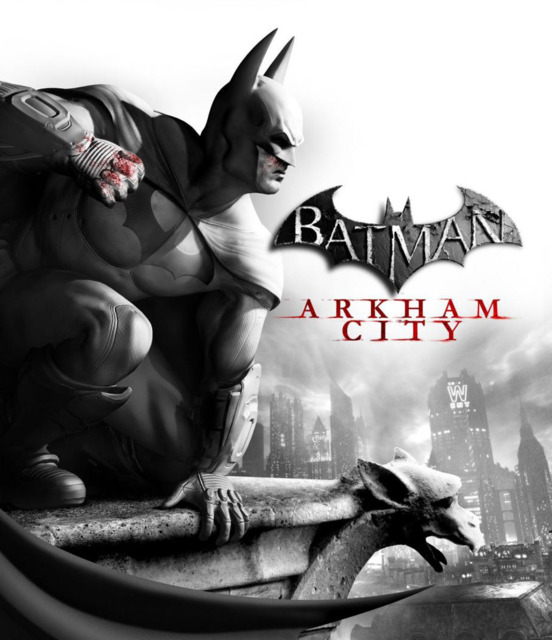Batman: Arkham City
Batman: Arkham City
The Batman is back and no crim is safe as developer Rocksteady Games delivers an impressive follow-up to 2009’s surprise hit.
It’s fair to say that Batman: Arkham Asylum caught us all somewhat by surprise. Initial impressions seemed promising, but we’d been let down too many times by disappointing comic-book licenses to get our hopes up too high. Suffice to say that we needn’t have worried: the brains at Rocksteady delivered a deep, atmospheric and thoroughly entertaining experience worthy of the Dark Knight himself. From the simple yet elegant attack-counter-dodge combat system which really helped convey the sense of flowing, impactful combat we’ve come to associate with the Caped Crusader and the semi-open, somewhat Metroidvania-esque layout of island prison facility Arkham Asylum, to the rich cast of colourful villains drawn from across the Batman lore, Batman: Arkham Asylum delivered on the license in a way few games of such origins have managed before or since.
Which made the task of creating a follow-up to said game quite a momentous one, and as such we're extremely happy to report that Rocksteady have managed to pull it out of the hat again. Batman: Arkham City improves on the original in a number of significant ways, and although a little of the atmosphere has been lost along the way, the majority of what made Asylum great remains intact. Set one year on from the events of the previous game, we arrive in Gotham at the start of Arkham City to find that, under the guidance of former Asylum warden Quincy Sharp, a large section of Gotham city itself has been walled off to become a super-prison for all of society’s most evil, tyrannical, and ridiculous criminals – which does make you wonder just what percentage of Gotham’s residents are actually honest citizens. That aside, we begin with our story’s protagonist – playboy billionaire Bruce “I’m-totally-not-at-all-Batman-honest” Wayne – protesting outside the front gates to the aptly-named Arkham City with the somewhat sensible claim that perhaps housing such a vast mass of the criminal underworld in an area right next to the good, hard-working residents of Gotham is perhaps not the best idea. Naturally, the man placed in charge of running said operation – “Doctor” Hugo Strange, fan of the bald-head-and-large-beard combo and one of a few people actually aware of Batman’s true identity – doesn’t take too kindly too this and the demonstration is brought to an abrupt halt when riot police arrive and throw Mr. Wayne into the facility.
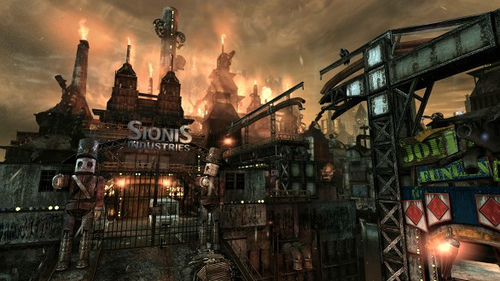
The game begins, then, with you handcuffed and being shuffled through processing. This provides the perfect opportunity to introduce you to the game’s combat, which should feel instantly familiar to those who played the original outing. Square (X on 360) delivers a blow to the nearest opponent in the direction you are holding, Triangle (Y) counters enemy attacks, Circle (B) stuns nearby foes with a swish of Batman’s cape, while a quick double-tap of Cross (A) performs an evasive dive to get you clear of trouble. Incoming attacks are signalled, as before, with a lightning-bolt flash above the enemy in question, giving you a brief moment to react appropriately. In the early stages of the game this just means a simple counter, but as you progress Batman will encounter a variety of threats, such as thugs wielding shields, knives and stun rods, all of whom must be dealt with in a different fashion. This turns the brawls in the latter stages of the game into a “combat puzzle” of sorts, where you are kept on the tips of your toes carefully selecting the correct course of action to pursue against a multitude of different foes. Once you’ve got to grips with the basics, combat flows well and it becomes incredibly satisfying to come through an encounter unscathed – more so here as Arkham City offers you far more opportunity through the main story mode to test your skills against large numbers of henchmen than its predecessor did. We tried the game on both normal and hard difficulty levels, and it seems that if you can manage it on the easier, you should be able to progress to the more challenging variant – the only notable differences are that the counter button, rather than the standard attack one, will become your most used action, and that you get fewer chances should you mess up. Unlike Asylum, where counter indicators were removed when playing on hard, in Arkham City this feature is available until you decide to tackle the game’s “New Game +” mode.
However, the unarmed combat is only one half of the enemy encounters in Arkham, complemented by the “Silent Predator” sections, where you are required to use Batman’s stealth abilities and wealth of gadgets to avoid and take down groups of armed thugs. In the original game, these areas became notorious for their over-reliance on gargoyle heads used to navigate the environments and hide unseen from searching eyes. These remain in fairly large numbers – however this time around they are notably fewer, and are complemented with a number of other alternatives. Otherwise however, these sections feel fairly unchanged from Asylum, although Batman’s array of tools to help him through undetected has expanded somewhat. This helps keep armed thugs feeling sufficiently dangerous, which is a decision we are big fans of.
Arkham City itself is a lot more open from the start than Arkham Asylum was – around ten minutes in, Bruce has re-united himself with his Batman apparel and you are set free to explore the world as you desire. The city is smaller than that seen in a city such as Assassin’s Creed: Brotherhood’s Rome, but Rocksteady have made up for this by packing it chock-full of detail, with no noticeably repeated sections and traversable space which spans almost as far vertically at times as it does horizontally, as well as a range of detailed indoor environments in which most of the key story sections take place (allowing for a more controlled experience wherever it is deemed necessary). The city as a whole can be explored easily from the get-go, but as you progress Batman will obtain more and more tools which allow either for easier traversal (such as the ability to transition from a grapple up the side of a building directly into a glide) or the ability to obtain more of the 281 Riddler trophies scattered across the city. A few of these may simply be picked up from the floor; others require either feats of acrobatic excellence – such as gliding between several pressure plates without touching the floor – or a puzzle to be solved. The variety to these is fantastic, although we feel that perhaps the number of trophies available is perhaps too high, as it does lead to some repetition, or certain (more challenging) tasks being rewarded with multiple trophies. That said, it should keep the more obsessive players challenged long after the main game is complete. As if that weren’t enough, the challenge rooms featured in Arkham Asylum return, providing yet another way to while away the hours honing your combat and stealth skills to perfection.
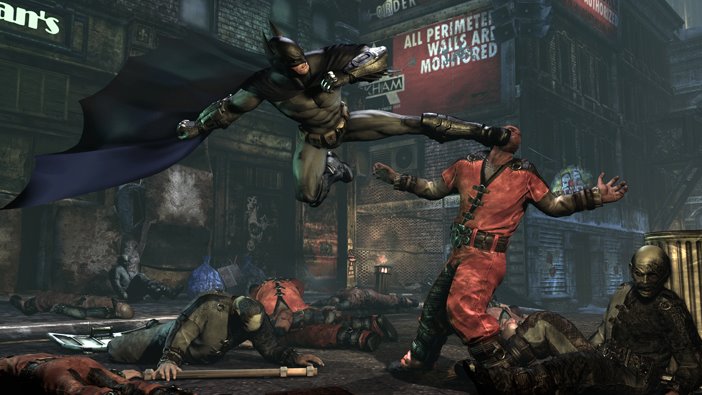
Batman wouldn’t be Batman, of course, were it not for the cast of antagonists who surround him, and again in this regard Arkham City is nothing short of astonishing. Alongside returning favourites such as the Joker (voiced for what he has said will be the last time by Mark Hamill), Harley Quinn and Bane come a fantastic number of other well-known (and a few more obscure, but no less entertaining) crims, who we won’t name here for fear of spoiling the surprise, other than to mention the redesigned Penguin (who has been seen in preview footage). Brought to life with a surprisingly convincing cockney style by Nolan North, Cobblepot has been re-imagined as a terrifyingly sadistic, diminutive figure – emphasised by the decision to replace his traditional monocle with the base of a glass bottle jammed around his eye. He stands out as a fantastic character, topped only for us by Hamill’s Joker, who absolutely steals the show with an phenomenal performance. This is helped by the strength of the story, which is strong throughout but in particular leads to a thrilling final act which really helps to convey just how confident the team at Rocksteady feel with the Batman fiction.
Actually fighting named villains in Asylum was however one of the less popular aspects of the title, what with the majority of the encounters being fairly traditional “boss fights”, with the notable exception of the Scarecrow encounters (a fantastic character who remains sadly absent here). For this year’s game, Rocksteady has solved the problem somewhat, although a couple of fights do boil down to fighting waves of thugs until the next cutscene appears. Others however are somewhat more well-designed, or require you to seek out the help of another inmate – which leads to some fantastic moments with Batman allying himself temporarily with those he would normally be fighting, which offers up some juicy opportunities for Wayne to make it clear, in a way only Batman can (and delivered in the smooth and intimidating vocal style of returning Kevin Conroy), just how temporary said alliance is.
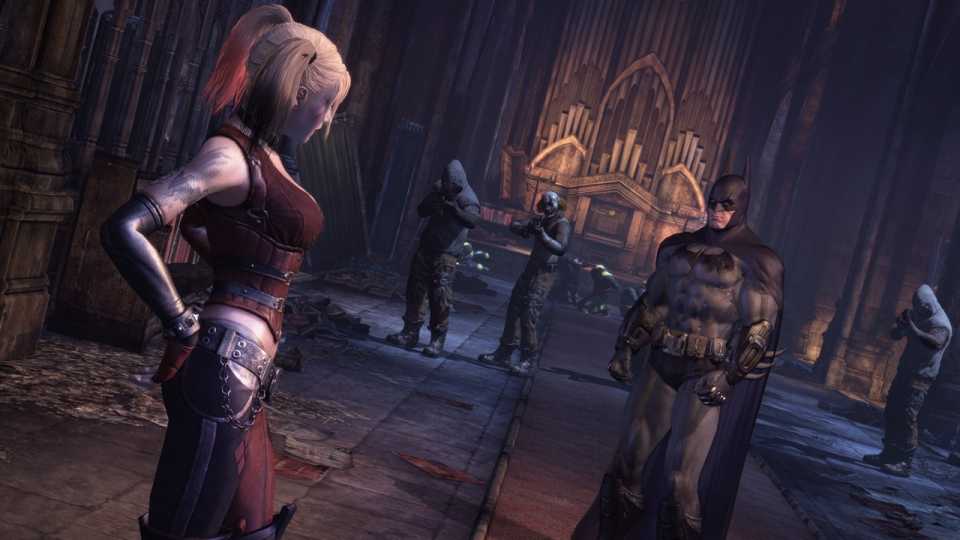
Alongside the main story and hundreds of collectibles dotted around the map are a number of side missions which provide a nice distraction and, although the majority of them are fairly straightforward in nature, they do all offer some interesting backstory into a variety of minor characters such as Deadshot and the Mad Hatter. The standout from the selection however are the Riddler challenges proper, in which Edward Nigma himself appears to you offering the chance to save those he has taken hostage, by solving a variety of puzzles and riddles. There are six of these in total and they are among the most fun challenges the game has to offer. Sadly these are locked behind the collectables lying around Arkham City, so if you want to tackle the later ones you will have to make a significant time investment seeking out quite a large percentage of Nigma’s scattered trophies first. While it's nice to have the opportunity to spend that much time in the world, it's perhaps a shame to see some of the game's best content hidden so far deep into the extras that many players will simply never see most of them.
Also of note are the Catwoman sections of the game, available to those who bought the game new, or via a bought “pass” which is becoming ever-more familiar in today’s games. This does strike up the odd point that those unfortunate few who have a console without the ability to connect to the internet are losing out on a part of the content which they ostensibly paid for – however, this is a discussion for another time. The content itself is excellent – it ties into the story well (in fact if you own the content from the outset, then the game opens first with a Catwoman scene), but without doing so in such a way as to confuse a player who doesn’t have it. Catwoman herself plays differently from Batman, although we can’t help but feel that a lot of her abilities are simply slightly less effective variants of those Wayne uses. A number of the Riddler trophies can only be collected by Catwoman, which gives a reason to use her for slightly longer – although, somewhat disappointingly, the majority of these are perfectly reachable by Batman, but are just arbitrarily restricted.
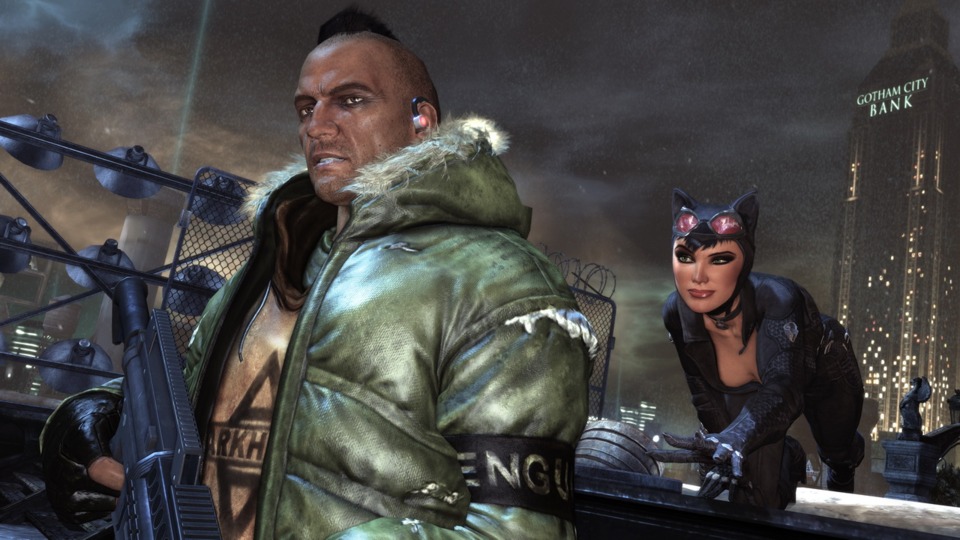
All in all, Batman: Arkham City doesn't just quash our fears as to whether Asylum was just a one-off; instead it pounces from the dark, strings them up and hangs them for all to see, in such a strong fashion as if to ask how we could ever have doubted Rocksteady in the first place. The setting, while perhaps lacking some of the original's atmosphere (almost unavoidable given the transition from single location to full-on cityscape), is rich and detailed, with a strong sense of place; the characters are phenomenal in terms of both scripting and performance largely across the board; and the story honestly takes bolder, more confident strides than we could possibly have anticipated – and is all the more memorable for it. One of the best things we can say about Arkham City is that in putting this review together, we struggled to find any real flaws notable enough to bring down the score other than to suggest that perhaps there was too much optional bonus content – however this is clearly a ridiculous notion, especially given that it clearly isn't in there to hide any lack of depth in the main content. Truly a fantastic game – a must-play for fans of the previous game (and fans of Batman in general), and an experience which we highly recommend trying even if you perhaps had been steering clear of the series up until now. Marvellous.
